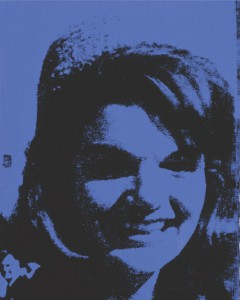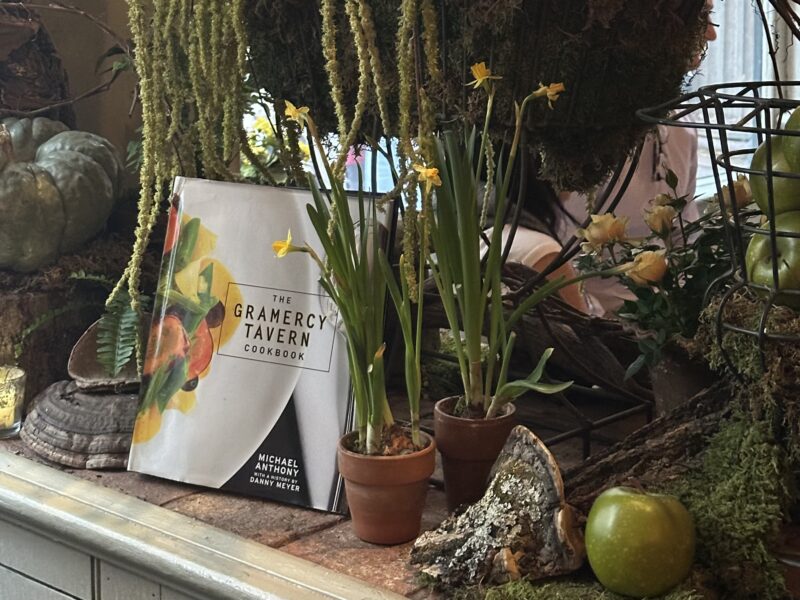 The Dalí Museum is hosting a reputable collection of pop art straight from the self-proclaimed “superficial” man of metropolitan muses himself, Andy Warhol.
The Dalí Museum is hosting a reputable collection of pop art straight from the self-proclaimed “superficial” man of metropolitan muses himself, Andy Warhol.
On the second floor of the Dalí, the collection of work native to the museum hangs in the corridor opposite the glossy purple-printed wall with the single-color plane of an almost indistinguishable face. The bright color peeking over the top of the iconic spiral staircase may be unfamiliar to museum regulars, but not those who know Warhol.
A couple examined the flat black-ink visage of Jackie Kennedy smiling with dead eyes. The man’s gestures suggested that he was in full-critique mode, his loose wrists making circles to better articulate his thoughts regarding the use of two dark colors on a linen surface. Whether the couple were regulars at the Dalí or just passersby, they took advantage of their right to openly critique the black-on-blue print.
It was interesting to speculate what they might have to say about the black-on-brown print of a gawking Joseph Beuys hanging just around the corner. But to make these two sound any more harsh than other visitors at the museum that day would be unfair.
The exhibit’s opening day was met by some heavy criticism from onlookers. It’s fair enough. With an artist who has long since left us, the pieces have to be able to defend themselves. What, though, does a small collection of Heinz Ketchup boxes sitting on a platform at hip-level say about its creator?
Visiting a Warhol exhibit has been and will always be more than just staring up at a large silk-screen print of Campbell’s Soup cans. Inside the Dalí’s tall white walls, there’s more going on than mesmerized patrons peering up at five-hour footage of nothing but John Giorno sleeping.
The gallery so filled with art is not surprisingly also filled with discussion. Divided discussion, of course.
The ambivalence that surrounds the wire-haired “madman” still astounds art critics and museum-goers alike. Some love him. Some hate him. There aren’t many who don’t love to hate him or don’t hate that they love him. Warhol’s reputation is built upon the people who # even today # stand in front of the dozens of silk-screen printed, neon-painted reproductions of commonplace items, wondering how in the world something so present in everyday life warrants a place in a fine art gallery.
Warhol did anything he could to deny the bourgeois ideals of aesthetics. Anyone familiar with his work doesn’t have to hear that twice. It’s not surprising the couple discussing the unconvincing smile of Kennedy’s widow would only glance at the art itself for mere seconds before returning to their squabble.
You don’t have to look at a Warhol piece long. It’s simple. It’s flat. It’s famous.
Famous as the work is, many of Warhol’s subjects hold a reputation on their own. The aforementioned Jackie Kennedy prints weren’t far from a neon-colored Mona Lisa.
A portrait of Debbie Harry, no shorter than 4 feet above an average man’s head, was staring into a crowded space where Warhol’s graphite drawings lined the walls and three old televisions were playing the footage of “Andy Warhol’s Fifteen Minutes.”
In his work, Warhol presented himself as both artist and subject. He was huge in the metropolitan scene, and his close relations with other art world contemporaries like Jean-Michel Basquiat, John Cage and David Hockney are evidenced by the black and white prints of Warhol depicted beside these faces, as well as prints of his own hands credited with photographing themselves.
Popular opinion was Warhol’s playground. In his case, the popular opinion was split. Many might call his idea of art and aesthetics “radical.” People of an earlier era might have said the same of Dalí’s work, but much has changed since this time. Patrons have to do little more than cross the gallery into the other hall to find others silenced in awe, inspired by the more traditional beauty of the figures in Dalí’s “Hallucinogenic Toreador.”
Yet, the Warhol gallery was alive with the sound of philosophical prattle. It seemed a bit strange, at first, for it to be housed in the Dalí Museum.
Warhol was a contemporary of Dalí, of course, having been an active artist between the 1960s and the late 1980s and living in New York City at around the same time. However, unlike Warhol, Dalí’s pieces concerned his own dream realm while the renowned pop artist strictly dealt with the better-than-real realm of fame and consumerism.
This very phenomenon caught the attention of many, but namely art critic and philosopher Arthur Danto. A reputable philosopher that has, since his prime, defended Warhol’s work as the end of the line in the theory of aesthetics. Or, possibly, just the end of aesthetics.
Danto concluded, in essence, it was not the beauty of the art, but what the public had to say about it that made a work of art, “art.” It was popular opinion, discussion # the very buzz that filled the Warhol gallery on its opening day at the Dalí # that created an art world. And the art world is where works like Warhol’s could survive.
Warhol is famous, but he’s also infamous. He’s visionary, and visionless. Warhol’s work, in theory, embodies the definition of anti-art.
There’s a plaque on the wall in the side of the museum where the Dalí pieces hang, right in the small anti-art gallery. This plaque details the history of Dalí and his practice of anti-art, an idea that art should be questioned, not accepted. The idea that previous concepts and attitudes of art should be rejected and thrown aside in favor of avant-garde or new wave thinking. Dalí played with the idea of replacing reality in art with images from dreams. Warhol played with the idea of replacing reality in art with popular media. “Pop culture,” thus, pop art.
Loving Warhol isn’t hard. Hating Warhol is even easier. One thing’s for sure: few people lack opinions on Warhol, and that in itself might be proof of his success as an artist.
Warhol might have liked boring things, but the press presented him as anything but banal, whether it was paying respect to his acute taste or slandering his color palette. Besides, there really is more to Warhol than his Campbell’s Soup cans and his Brillo Pads. There are also his Campbell’s Soup box prints and his Heinz Ketchup crates.
See for yourself: The Warhol exhibit will be at the Dalí Museum until until April 27. Admission is free with your student ID.



This is a article that has made me think differently about the artist . No article has ever made an impact relating to his work before I read this, and changed my mind on his work Thank you Miss Raven Martinez for shining a light on his work .